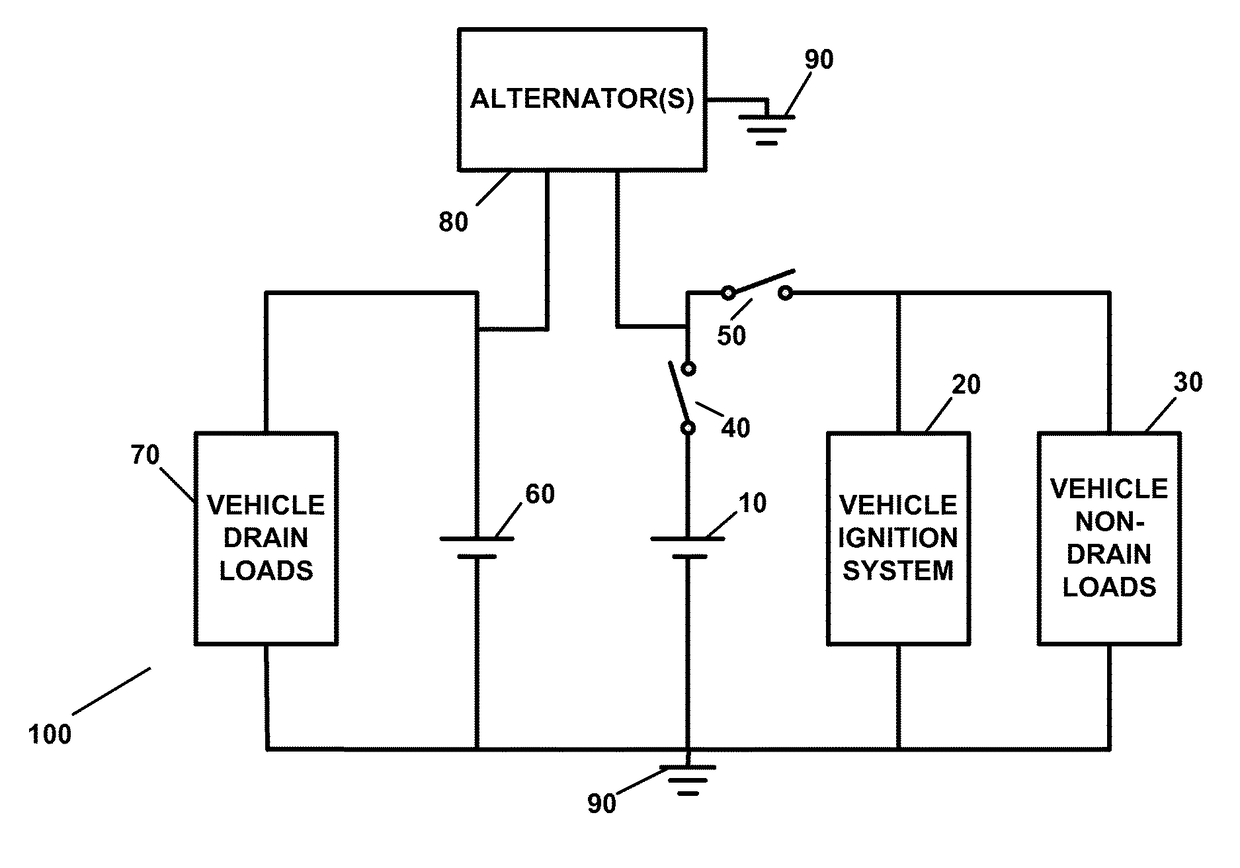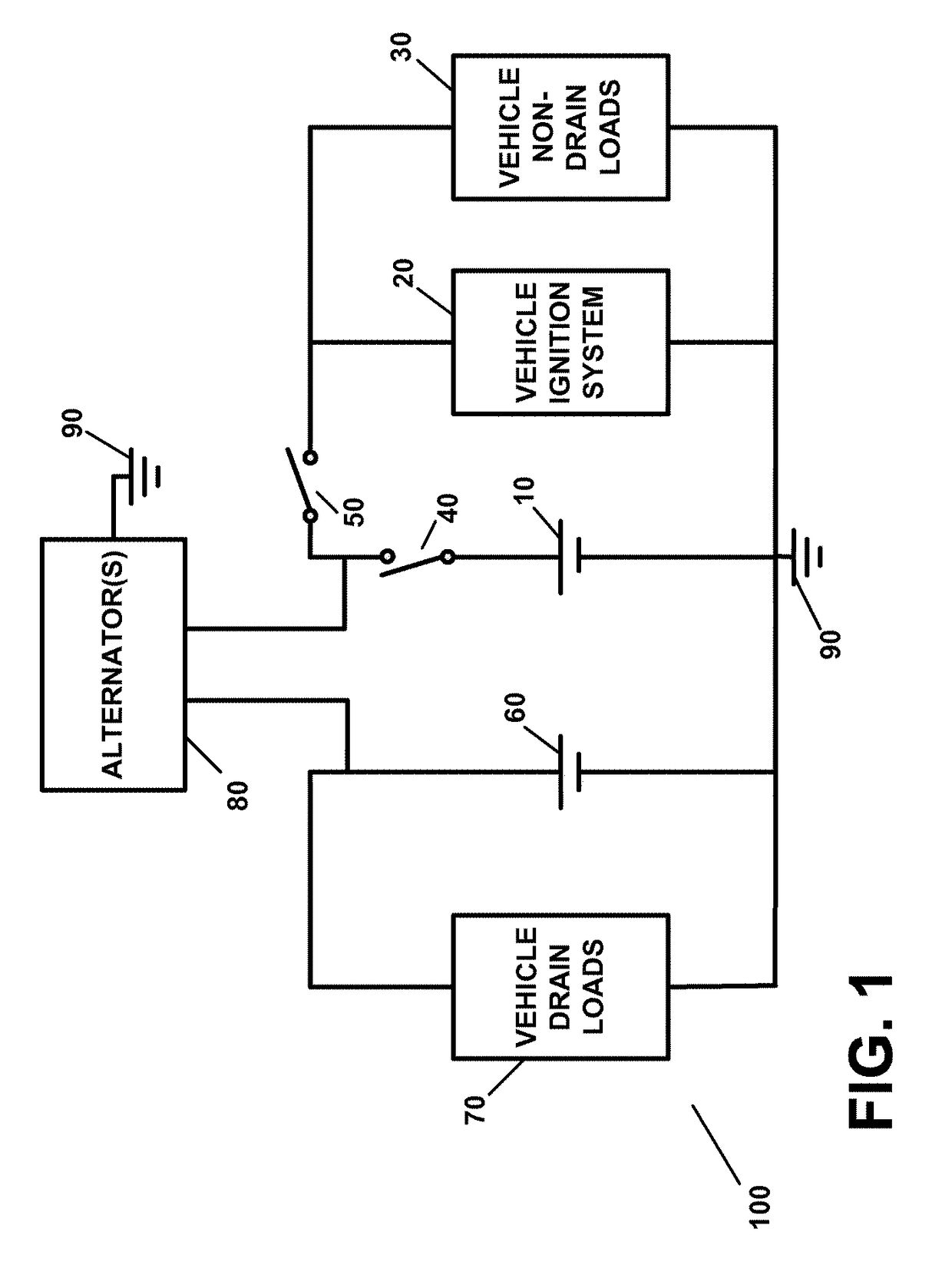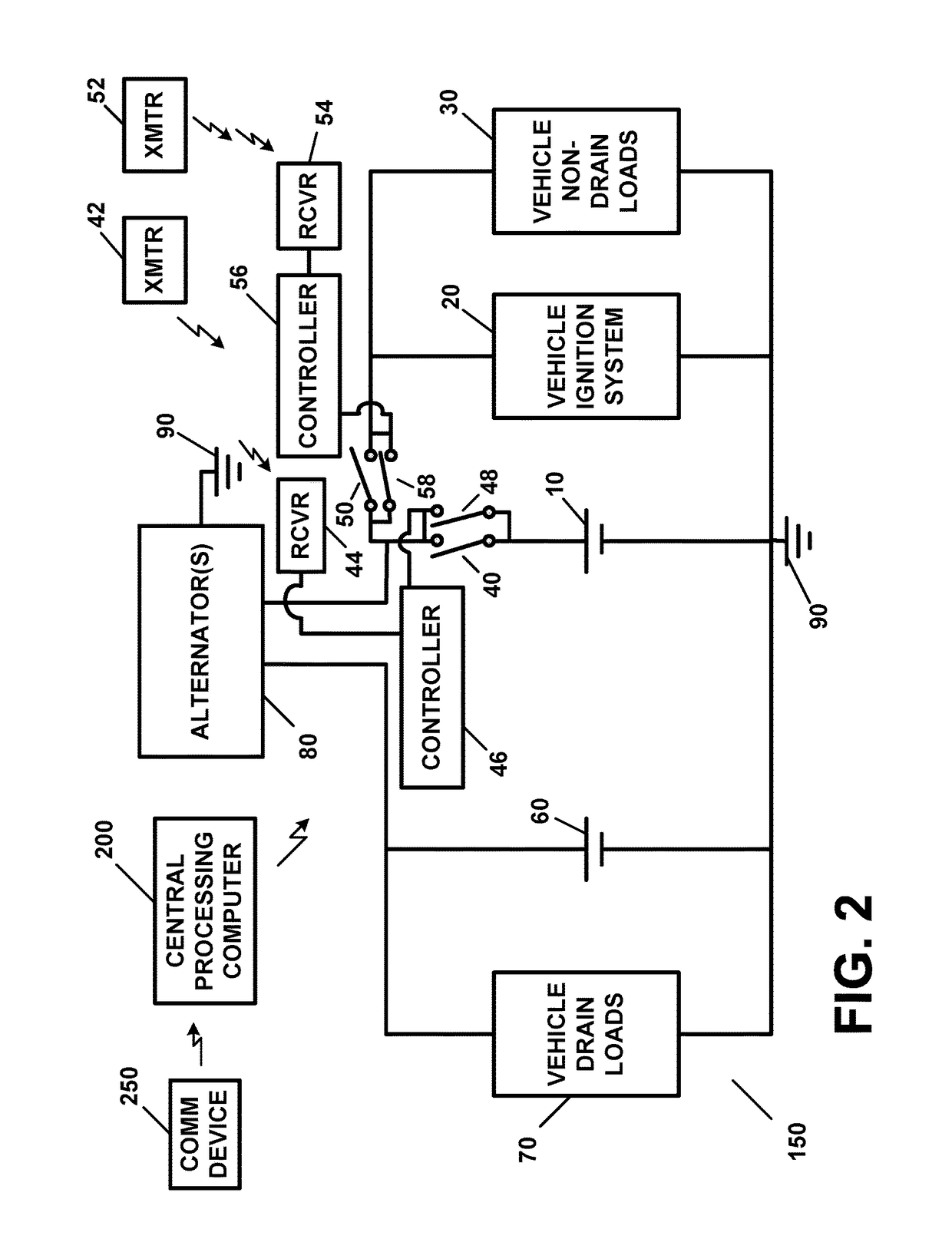Battery power management apparatus and method
a power management and battery technology, applied in mechanical devices, machines/engines, transportation and packaging, etc., can solve the problems of battery going dead, affecting the operation of the same, and reducing the service life of the battery, so as to achieve the effect of sufficient electrical power
- Summary
- Abstract
- Description
- Claims
- Application Information
AI Technical Summary
Benefits of technology
Problems solved by technology
Method used
Image
Examples
Embodiment Construction
[0053]The present invention pertains to a battery power management apparatus and method and, in particular, to a battery power management apparatus and method which can conserve battery power and / or battery charge level for electrical systems and / or components which do not require power when a vehicle, a premises, or an article, is not operating or not in use, while providing power to and / or for electrical systems and / or components which require power when the vehicle, the premises, or the article, is not operating or not in use, or which otherwise needs to be provided with power when a power source and / or a recharging source ceases to operate, is non-operational, or is turned off.
[0054]The apparatus and method of the present invention can be utilized in any number of a wide variety of applications, including but not limited to, applications in, or in connection with, motor vehicles, automobiles, trucks, mass transportation vehicles, buses, school buses, trains, subway trains, aircr...
PUM
 Login to View More
Login to View More Abstract
Description
Claims
Application Information
 Login to View More
Login to View More - R&D
- Intellectual Property
- Life Sciences
- Materials
- Tech Scout
- Unparalleled Data Quality
- Higher Quality Content
- 60% Fewer Hallucinations
Browse by: Latest US Patents, China's latest patents, Technical Efficacy Thesaurus, Application Domain, Technology Topic, Popular Technical Reports.
© 2025 PatSnap. All rights reserved.Legal|Privacy policy|Modern Slavery Act Transparency Statement|Sitemap|About US| Contact US: help@patsnap.com



